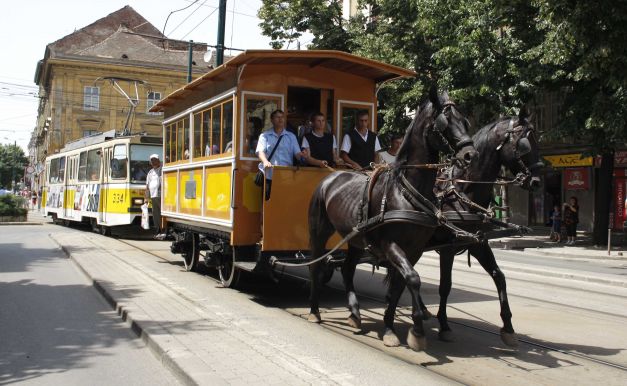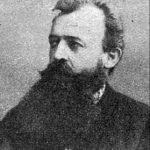The western Romanian city of Temesvár/Timișoara celebrated on Monday 150 years since the first horse-drawn entered service. After Budapest, Temesvár was the second city of the Hungarian Kingdom and among the first ten in the world. Truth be told though, Europe wasn’t all that swift in adopting horse-drawn trams. New York was the pioneer, introducing them in 1832, followed by Paris in 1835, but ti took another 25 years for Birkenhead in England to follow the example (1860) and London in 1861.
Temesvár – at the time in the early stages of industrialization – decided to introduce horse-drawn trams with a dual purpose: first to speed up traffic between its two most distant districts and second to also serve its burgeoning industry with goods transport between factories and train stations. In November 1867 the city established the Temesvári Közúti Vaspálya Rt (Temesvár Public Railway Ltd). The importance of the projects is clear from the fact that the president of the company was then Mayor Károly Küttel.

Old and new trams in Temesvár on the same track
The Budapest-based Krammer & Herzberg company eventually won the concession for 40 years, and in exchange for the profits received a 40-year concession period and also took upon itself the building of the necessary bridges and 25% of the maintenance costs. Construction began during the unusually mild winter of 1868, but initial progress was slow – allegedly because political parties skimming some of the overinflated costs of the project.

So the mayor began his search for someone with both experience and unsullied by local ties. This person was Swiss-born railway engineer Heinrich Baader, who in April 1869 was appointed CEO of the company.
Lo and behold, the young Swiss took his job seriously, introducing severe penalties for missed deadlines and firing anyone who didn’t pull their weight. Accordingly, test run on the first section of the tram line began in the morning of July 8, 1869 and regular traffic the same afternoon. Baader remained in Temesvár and ran the company for an astonishing 50 years.
The price of a ticket remained unchanged at 10 krajcár (the sub-unit of the Forint) for 30 years – but with the qualification that from 1816 to 1896 Hungary had an eighty-year deflation period, with overall price levels decreasing continuously.
Temesvár introduced electric public lighting in 1884, and the conversion of the horse-drawn tram to electrical began in 1899, thus closing a historic era.